(Video) Iran opposition NCRI marks 20th anniversary of groundbreaking revelations
August 29, 2022Human Rights - Social Gov originally published at Human Rights - Social Gov
Several senior U.S. politicians discussed the impact of the revelations made by the Iranian opposition coalition National Council of Resistance of Iran (NCRI) on August 14, 2002, in unveiling to the world for the first time two sites of Natanz and Arak.
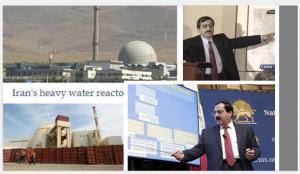
The conference, held on Wednesday, August 17, in Washington, discussed the nature of Iran’s nuclear program, the military dimension and the regime’s clandestine efforts, and the ongoing drive to obtain nuclear weapons.
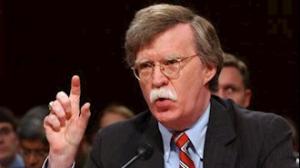
Amb. John Bolton explained the NCRI revelation, at the time.“This revelation of Natanz, for the U.S. government, was incredibly important. It was hard to get people in Washington, our friends in Europe, and around the world to focus, on the threat from Iran.
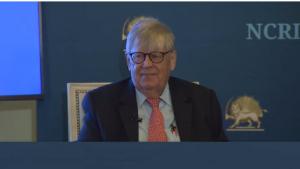
Olli Heinonen, the IAEA deputy director at the time of the NCRI’s Natanz revelations, explains about information literally changed everything. The IAEA was aware of enrichment in Iran the magnitude was very different. Natanz was not known to us in August 2002.
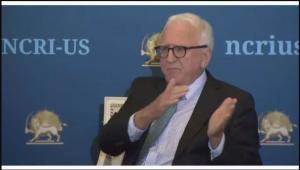
Amb. Joseph addressed a question on how U.S. intelligence learned a few things from the NCRI’s Natanz revelations 20 years ago. The revelations really did have a significant impact on how we thought about Iran and the need to respond to the Iranian program.
This revelation was so significant because it through the Iranian regime off balance, which had plans for years to develop nuclear weapons.
— MEK
PARIS, FRANCE, August 19, 2022 /EINPresswire.com/ — Several senior U.S. politicians discussed the impact of the groundbreaking revelations made by the Iranian opposition coalition National Council of Resistance of Iran (NCRI) on August 14, 2002, in unveiling to the world for the first time two sites of the Iranian regime’s nuclear weapons program in Natanz and Arak.
The conference, held on Wednesday, August 17, in Washington, discussed the nature of Iran’s nuclear program, the military dimension and the regime’s clandestine efforts, and the ongoing drive to obtain nuclear weapons.
Prominent dignitaries participating in the event included former U.S. National Security Adviser Amb. John Bolton, former U.S. Vice Presidential candidate Senator Joseph Lieberman, Olli Heinonen, former deputy director of the International Atomic Energy Agency, Amb. Robert Joseph, a former U.S. Under Secretary of State for Arms Control and International Security, General Chuck Wald, former Deputy Commander of United States European Command.
These dignitaries joined Alireza Jafarzadeh, Deputy Director of the NCRI-U.S. Representative Office, and the individual who presented the NCRI’s revelations of the Natanz and Arak nuclear sites back in August 2002. Wednesday’s conference was moderated by American journalist James Rosen.
“The Natanz revelation was groundbreaking and important. It really awakened the world about the Iranian regime’s nuclear weapons program. But also, it opened doors for the IAEA to be able to have inspections on regular basis. This revelation was so significant because it through the Iranian regime off balance, which had plans for years to develop nuclear weapons. As former Iranian regime president Hassan Rouhani said in his book that their plan was to present to the world the Natanz facility having 54,000 centrifuges by March 2003,” Jafarzadeh, adding the NCRI had in a matter of nine months after the Natanz revelation three other major press conferences exposing further aspects of the Iranian regime’s nuclear weapons program.
Amb. John Bolton explained how the NCRI revelation reverberated in the councils of the Bush-Cheney administration at the time.
“This revelation about Natanz, for the U.S. government, was incredibility important. It was hard to get people in Washington, our friends in Europe, and elsewhere around the world to focus, especially on the threat from Iran. There was a feeling in many capitals that they were far away from any kind of nuclear weapons capability. When word about the enrichment facilities in Natanz got out and was increasingly understood, it had a dramatic impact publicly in this country and I think around the world because the palpable evidence that was presented made it inescapable that Iran had an advanced, sophisticated nuclear program that was almost surely pointed at the development of nuclear weapons,” Amb. Bolton highlighted.
Amb. Joseph addressed a question on how the U.S. intelligence community learned a few things from the NCRI’s Natanz/Arak revelations 20 years ago.
“With the [NCRI] briefing, the Iran nuclear issues, which had been a concern, became a priority. The revelations really did have a significant impact on how we thought about Iran and the need to respond to the Iranian program. It initiated the IAEA inspections. It added to the sense of urgency to create new tools, such as the Nuclear Security Initiative. And of course, it led to the negotiations beginning with [Germany, France, and the United Kingdom], and the cat-and-mouse game that has been continuing for 20 years,” Amb. Joseph explained.
Olli Heinonen, the deputy director of the IAEA at the time of the NCRI’s Natanz/Arak revelations, explains how this new information literally changed everything.
“The IAEA was aware of some aspects of uranium enrichment in Iran. The magnitude, however, was very different, particularly when we saw the satellite images from Natanz because Natanz was not known to us in August 2002. I wrote a letter to the Iranian ambassador and ask him to explain what is this all about. That letter never got an answer. In September of 2002, the Iranians said you are welcome to visit Iran in a few weeks’ time. A few weeks became half a year, practically. Finally, we went to Iran in February 2003, and they took us to Natanz, and that was an eye-opener when went inside because they said these centrifuges are their own development, own technology, they have never tested them, they have never put any drop of uranium there. But they had built about 1,000 of these centrifuges. You don’t build 1,000 centrifuges without testing because if they are not performing properly, they are broken. You cannot use and rebuild them. It was obvious to us from the very beginning that there must be another place. We asked them to have access to these other places, which we knew, and one of them was the Kalaye Electric Shop in Tehran. That access was not provided because they were still reorganizing their program,” Mr. Heinonen stipulated.
Sen. Lieberman addressed a question of “evolution” seen in part by both political U.S. parties on the issue of Iran in the last 20 years.
“We understood that Iran was a threat when it first seized our embassy and its hostages shortly after the revolution occurred and its links to terrorism. the NCRI’s report in August 2002 was jarring and riveting. On Capital Hill, it led to years of bipartisan support of essentially economic sanctions and other punitive acts against the Islamic Republic of Iran based on their development of what we took to be their clear development, though they denied it then and continue to deny it now in the face overwhelming evidence, their commitment to developing nuclear weapons, let alone their support of terrorist organizations,” Sen. Lieberman explained.
Gen. Chuck Wald focused on how the Natanz/Arak revelation was received in the military community.
“It wasn’t necessarily the first time that we had thought about Iran, obviously. it wasn’t a secret that [the Iranian regime] was going down this path, although it was publicly identified by Alireza, which was excellent. The dynamic for us, obviously, is that [a military option] is the last resort. We had a lot of planning and we coordinated with our allies. there is a military aspect to this that is part of the whole equation. Iran needs to realize there is an alternative to bad behavior. Last resort, but an alternative. We’ve been planning for that for 20 years, and it continues today,” Gen. Wald detailed.
Shahin Gobadi
NCRI
+33 6 61 65 32 31
email us here
On August 17, 2022, (NCRI) U.S. Rep. Office held a conference on Iran on the 20th anniversary of its 2002 revelation of the secret Natanz nuclear site.
https://www.youtube.com/watch?v=-vIVNujR9is
![]()
Article originally published on www.einpresswire.com as (Video) Iran opposition NCRI marks 20th anniversary of groundbreaking revelations
Human Rights - Social Gov originally published at Human Rights - Social Gov
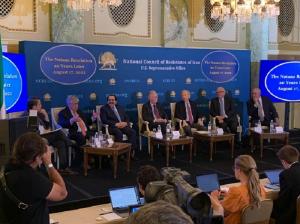
 ,
,




